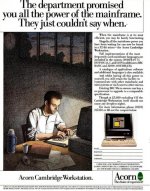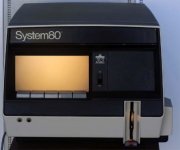but home market originally I think was mostly type writers and word processors. You could write a letter, presentation, etc and unlike a type writer, go back and correct or replace words and have the entire document edit itself which was pretty amazing improvement over type it one time and you're done or start over.
Yes, certainly when I bought my first home computer, the TRS-80-compatible System 80 computers were marketed (and priced) in New Zealand to adults, not to "family" as such. I used it for Word processing, Games, Learning BASIC, Household accounts and Membership lists roughly in that order. I even found it useful in my job to crunch stats and write documents...WAY better than the equipment I had a work.
The way I see it from 1976 to say 1981 there was a "personal computer" market which targetted adults;either electronic hobbiests, small business people or just well-heeled professionals wanting a computer for word processing, database, to learn more about computers and some games. Computers like the Apple II, TRS-80 Model I and III and Commodore Pet fitted neatly into this market.
Then around 1980/1981 the market split for a few years. A "home computer market" as lead by the Vic-20/ZX-Spectrum/TRS-80 colour computer developed. Poor keyboard and limited screen real-estate but cheap, and with colour, sound and graphics. Tape and cartridge for storage. The other branch was "business computers". Monochrome, little or no graphics, CP/M and later PC/MS-DOS. Invariably disk-based and expensive. The Apple II/IIe was about the only one that spanned these two markets, but it was priced in the business end.
In the day, I regarded those 1981-83 cheap colour and sound "home" computers as toys, where poor keyboards and screen real estate limited "useful" things you could do with them. But then I was an adult at the time. I'm sure if I was a kid with games in mind I would have loved one. Not that I didn't enjoy the odd game. The TRS-80 world despite the B/W blocky graphics, still had some entertaining titles. My favourites were the adventure games, where graphics weren't used anyway.
Tez


